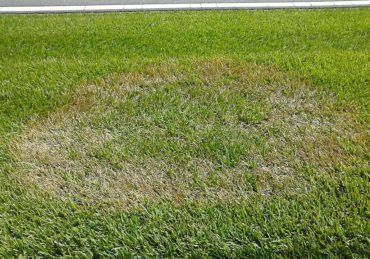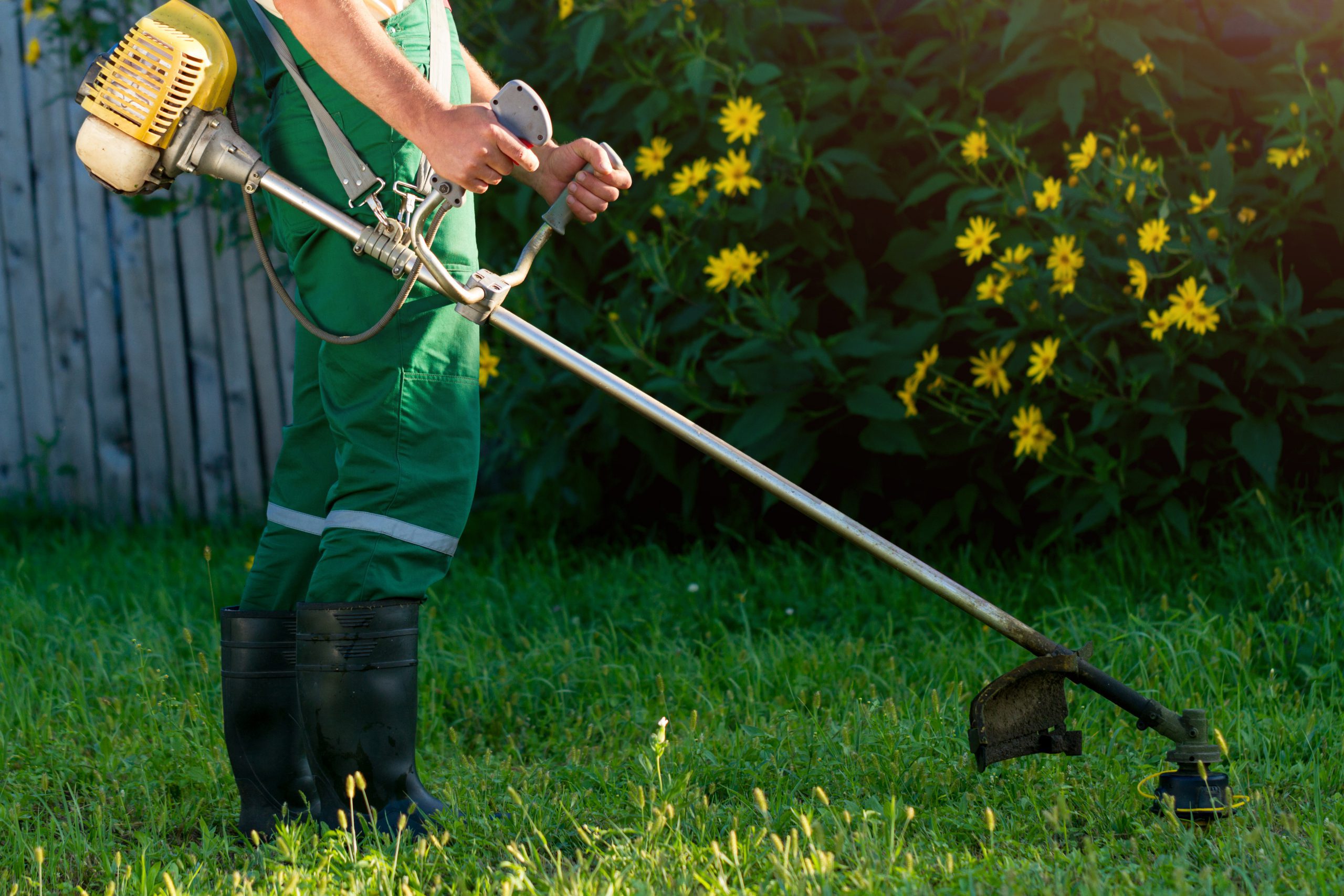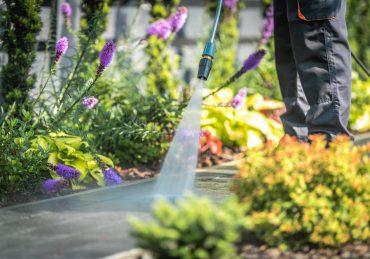Walk through any neighborhood in spring and you’ll spot it: one yard looks like it belongs on a magazine cover, while the next has patchy grass and a tilted mailbox. Chances are, someone just invested in landscaping. But how much did it actually cost them?
The truth is, landscaping prices swing wildly depending on your yard, your goals, and what you’re willing to tackle yourself. Whether you’re eyeing low cost low maintenance front yard landscaping or planning a full yard transformation, understanding what goes into the bill is step one.
Let’s break it down, the same way we would with any homeowner standing in their driveway with a quote in hand and a lot of questions.
What Really Drives Landscaping Costs?
Most people think landscaping is just about plants and grass. Then the estimate arrives and suddenly “a few bushes and some mulch” turns into sticker shock. That’s because your yard’s size, the features you want, and who does the work all influence the bottom line.
LawnGuru Service Cost Calculator
Yard Size and Project Scope
A small yard with a few planting beds is a whole different story than a sloped acre needing retaining walls. Typically, landscaping cost scales with square footage, but it’s not a perfect ratio.
- A 500–800 sq ft front yard can often be refreshed for $1,500–$5,000 depending on detail.
- Full yard renovations with grading, plantings, and hardscape for 2,000+ sq ft can land in the $8,000–$20,000+ range.
The more elements you introduce, lighting, irrigation, walkways, the steeper the climb.
Softscape vs. Hardscape: Material Costs Matter
Think of softscape as everything alive: grass, shrubs, trees, mulch. Hardscape is the non-living backbone, patios, stone edging, pavers, retaining walls.
Softscape generally runs $4–$10 per sq ft. Hardscape can jump to $15–$50 per sq ft, or more with premium materials.
Note: Many homeowners underestimate how fast hardscape adds up. A small 10×10 patio at $30/sq ft means a $3,000 addition, just for one surface.
Labor and Professional Services
If you hire a full-service landscaping team, expect labor to make up 50%–80% of your total. And if your plan involves drainage correction, grading, or design consultation, those services carry their own costs.
Even smaller jobs like sod installation or hedge trimming include crew hours, disposal fees, and transit. This is where a landscaping cost calculator can help clarify what’s necessary vs. what’s “nice to have.”
Common Cost Ranges From Basic Cleanups to Full Transformations
A homeowner in their first starter home may only need a tidy-up and planting refresh. Another, moving into a forever home, might want hardscaping, lighting, and irrigation. The price gap? Substantial.
- Basic front yard updates (mulch, shrubs, edging): $1,500–$4,000
- Mid-size full yard installs with soft/hardscape blend: $6,000–$15,000
- Premium installs with outdoor kitchens, water features, custom patios: $25,000+
Some try to price by square foot, but total features matter more than footprint. A tight 800 sq ft yard with top-tier pavers and lighting can cost more than a flat 2,000 sq ft lawn install.

Estimating Your Budget Like a Pro: Think in Layers
You don’t need to be a contractor to use a landscaping cost calculator mindset. Start with a sketch, even a napkin sketch, and answer three basic questions.
1. What’s the square footage?
Don’t forget to subtract existing elements that stay (driveways, porches). Focus only on the area you’re treating.
2. What are your must-haves?
If you just need lawn, budget $1.50–$3 per sq ft for seeding or $2–$5 for sod. For simple planting beds with mulch, plan on $4–$6 per sq ft.
Want hardscape? Add $20–$35 per sq ft for patios and walkways. Then tack on lighting, irrigation, and other features layer by layer.
3. What work can you do yourself?
If you’re up for hauling mulch or planting, you’ll shave off hundreds. Just don’t underestimate time or disposal costs. Many homeowners bail halfway through DIY and pay more for cleanup later.
Where to Cut Costs Without Ruining the Result
You don’t need to choose between barren and beautiful. A little planning goes a long way in keeping things affordable and functional.
Reality Check: The best “budget landscaping” plans are the ones that respect your timeline and maintenance appetite, not just the price tag.
- Stick to softscape and keep the layout clean.
- Go for mulch and groundcover over decorative gravel.
- Choose native or low-water plants for long-term savings.
- If you’re adding hardscape, keep it small, a single path instead of a full patio.
- Phase your project: lawn and plants now, hardscape next year.
This approach keeps your front yard looking tidy and adds curb appeal without maxing out the card.
What Landscaping Looks Like for Small Yards
If your yard is smaller than your living room, you’re in luck: you’ll spend less, and can often afford higher-quality touches without blowing the budget.
Let’s say you have 600 sq ft of front yard:
- Basic sod install: $1,500–$2,000
- Add a few shrubs, mulch, and border: bump to $3,000–$4,500
- Want a small paver walkway? That’ll likely bring the total to $5,000–$6,000
The key? Don’t overdesign. Small yards benefit most from symmetry, low-maintenance materials, and subtle improvements.
Landscaping Isn’t Just a Cost It’s a Long-Term Gain
You know that moment when the job’s done, the mulch is fresh, and your neighbors slow down just a bit as they pass your house? That’s the return on investment.
Besides curb appeal, thoughtful landscaping adds long-term value:
- Healthy grass and beds reduce erosion and drainage issues.
- Shade trees lower cooling bills over time.
- Native plants mean fewer weeds, less watering, and reduced maintenance.
In the resale world, a well-kept yard can improve perceived home value by 7–14%, depending on market conditions. It’s not just what you spent, it’s what it prevents and what it adds to daily life.
FAQs
How much does landscaping cost for a small yard?
For softscape-focused projects under 800 sq ft, expect $1,500–$5,000 depending on plant selection and materials.
What’s the cost per square foot for landscaping?
Softscape usually runs $4–$10 per sq ft. Hardscape starts closer to $15–$50 per sq ft depending on material and layout.
What factors increase landscaping costs the most?
Hardscaping, elevation changes, drainage work, and professional design services are top cost drivers.
Can I do some landscaping myself to save money?
Yes, hauling, planting, and cleanup are DIY-friendly. Just be realistic about time and tools.
Does landscaping really add value to a home?
Yes. Thoughtful design and upkeep increase appeal and can raise sale price or speed up sale time.
Plan Smart, Spend Right, and Build a Yard That Works for You
If your lawn needs help and your budget needs boundaries, you’re not alone. Start with the basics, build in layers, and don’t get talked into features you won’t use.
Landscaping doesn’t have to be elaborate, it just has to make sense for your yard, your life, and your goals. And if you’re ready to skip the guessing game, we’re here to help you build something worth stepping outside for.




